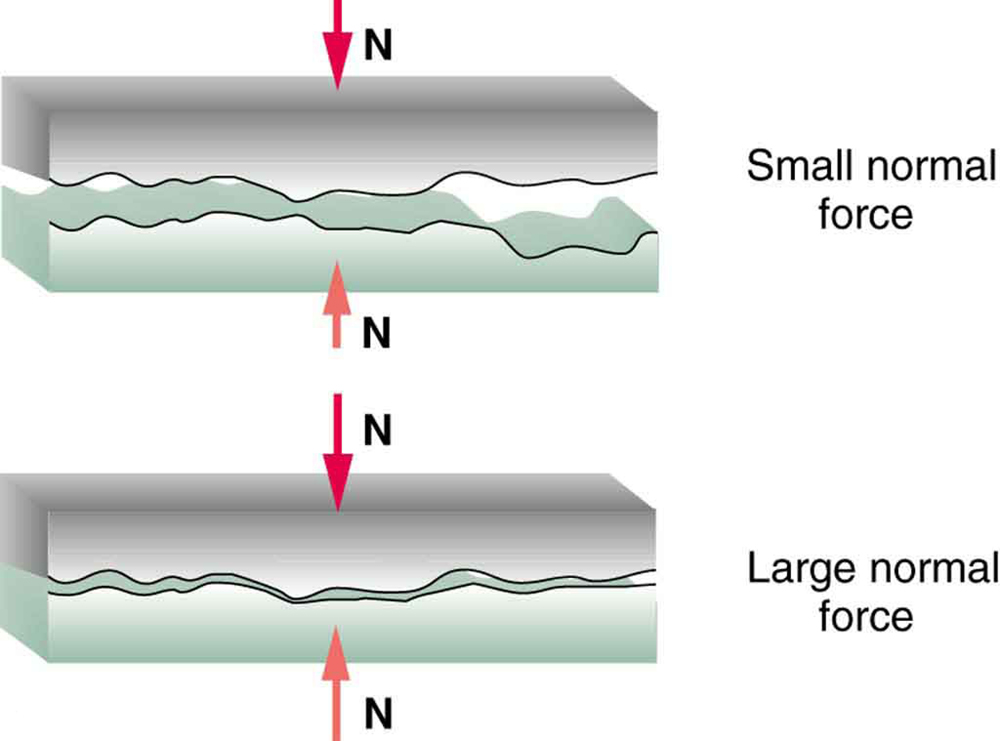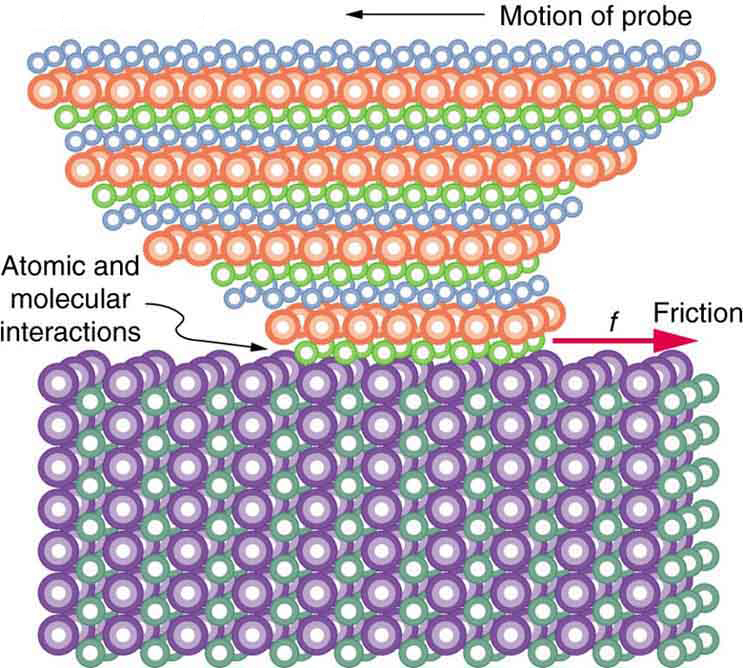| << Chapter < Page | Chapter >> Page > |

But the atomic-scale view promises to explain far more than the simpler features of friction. The mechanism for how heat is generated is now being determined. In other words, why do surfaces get warmer when rubbed? Essentially, atoms are linked with one another to form lattices. When surfaces rub, the surface atoms adhere and cause atomic lattices to vibrate—essentially creating sound waves that penetrate the material. The sound waves diminish with distance and their energy is converted into heat. Chemical reactions that are related to frictional wear can also occur between atoms and molecules on the surfaces. [link] shows how the tip of a probe drawn across another material is deformed by atomic-scale friction. The force needed to drag the tip can be measured and is found to be related to shear stress, which will be discussed later in this chapter. The variation in shear stress is remarkable (more than a factor of ) and difficult to predict theoretically, but shear stress is yielding a fundamental understanding of a large-scale phenomenon known since ancient times—friction.

Explore the forces at work when you try to push a filing cabinet. Create an applied force and see the resulting friction force and total force acting on the cabinet. Charts show the forces, position, velocity, and acceleration vs. time. Draw a free-body diagram of all the forces (including gravitational and normal forces).

When a force of 20 N is applied to a stationary box weighing 40 N, the box does not move. This means the coefficient of static friction
(b)
A 2-kg block slides down a ramp which is at an incline of 25º. If the frictional force is 4.86 N, what is the coefficient of friction? At what incline will the box slide at a constant velocity? Assume g = 10 m/s 2 .
A block is given a short push and then slides with constant friction across a horizontal floor. Which statement best explains the direction of the force that friction applies on the moving block?
(c)

Notification Switch
Would you like to follow the 'College physics for ap® courses' conversation and receive update notifications?